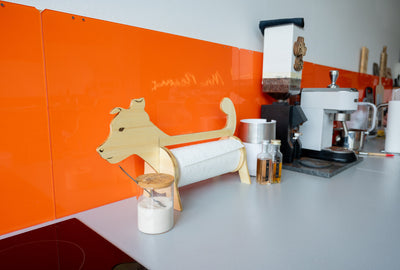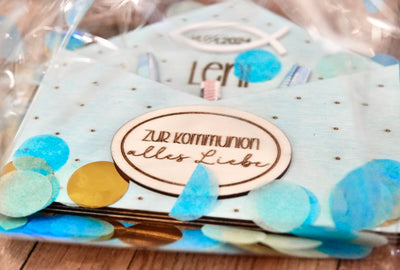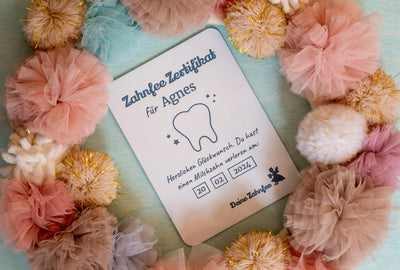Barely Christmas About the stage, is already the next big day of the gift. This time, however, it is a very special, so special gifts calls for. So that you do not stand with empty hands on Valentine's Day in front of your sweetheart, we have today Tutorial prepared for you, with the help you have one can be own valentine card with the MR Beam laser and crafting. Have lots of fun with it!
Design of the three-dimensional Valentine card
If you have a Mr Beam home, you do not have to be an experienced origami artist for an optically appealing, three-dimensional Valentine card to craft. Our Valentine's design for tinkering can be found as always in our design store for download.
Outside
On the outside of the card, we put on a simple Design of a heart. We have created that by creating one half in Adobe Illustrator with the winding tool. We then duplicated, mirrored and placed on the other side. Only then did we turn the whole construct a bit, because placing the second half would have been much more difficult.
Among them, we still have the simple lettering "Love" inserted - Of course, mirrored, so that he is on the front right afterwards. So that this can really be cut, the font must convert into paths, remove the area and set a contour. Otherwise, the laser engraves the font only.

inside
The deposit of the card we made a bit smaller than the actual card. So you can see a bit of different colors material Also from the inside and ultimately there is one of the 3D effects. At the interior design, we have ourselves for the saying "Be my valentine" decided, which is placed vertically in the middle of the card. But he is not simply engraved, but with some cuts and buckling so installed that he protrudes a bit when opening the card. So that the knick succeeds better, you can make the paper on the knick easily "Engrave". These lines should be colored in a different color, so that Mr Beam They can distinguish them. But more in the chapter on the laser settings.

The same kinks and the two cuts, you can now Attach the Valentine Card to the outside to reinforce the effect. Lastly, we have inserted a 0.5 cm hole on both sides of the cards, so you can tie the card later.
Material choice - a "classic" paper card for Valentine's Day
Thanks to the kinks that produce the 3D effect, only paper is suitable for this card. But we recommend a slightly strong paper, so that it looks like something, on the other hand, the engraving will work. Otherwise, the laser may simply cut through the paper. For the outside, we have 0.3 mm thick paper printed with roses. However, it is printed only on one side, so that the MR beam can cut without disturbances on the other side. For the inside, we have taken 0.2 mm thick, white paper. The thickness of the papers will be in the next chapter for the Laser parameter important.

Fascination laser and its settings
Just when the MR Beam paper laser looks through the high speed, especially spectacular out. So that the whole thing really reaches the desired result, a few settings must be made.
For the red paper, i.e. the outer side, which is 0.3 mm thick, we used the standard settings for red paper for the cut and only lowered the speed a little so that the laser could get through safely. For the engraving, we have created a second cutting setting so that the laser does not laser pixels for pixels, but instead direct the line directly. For this, we reduced the intensity that increases speed and remove the second pass.

With the inside of the card we have done all rightly similar, only the parameters just adapted to the white, 0.2 mm thick paper. For the details, we have shown you here again pictures of the exact parameters. But do not forget that grade paper can be very different. So we recommend that you try it in a small piece in advance.

Simply falling in love - the homemade Valentine card from the Mr Beam
Folding the DIY Valentine Card
After your Mr Beam has drifted his job, then you are in the row. All the following steps apply to both sides of the Valentine card. We want to show it by way of example on the inside:
- Fold the card once in the middle, so that the longest of the three engravings is inside.

- Then it is tricky. Concern now that the inner part is pressed inwardly between the two cuts inside. Be careful that you do not break the font.
- When the inner knick is inverted, you still have to kink the two outer kinks, so the paper no longer bends.

- Finally, keep everything well flat, so the Valentine card remains reasonably remains.
Connecting the Valentine Card
Last but not least, the two card sides must only be glued together. We only glued on the outer edges so that the 3D effect comes out even better. However, if you want to glue them flush, you have to move the holes in front of the laser so that they continue to fit flush together.

Done is your homemade Valentine card
When this step is completed, you can now write to the map, whatever you favor, tying you with a sanding, and you're ready! Your self-taught Valentine card!
As always, you like your result #madewithmrbeam Share with us and the community. Maybe you should do that only after Valentine's Day, if it should be a surprise ... 🥰




